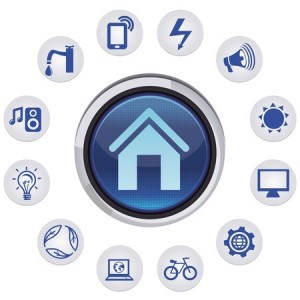The New Tech and Telecom Landscape

In fact, 98% of apartment residents say good cell reception in their apartments is important—so important that more than half check a property’s on-site cell phone connectivity before choosing to lease there. Moreover, 94% rank high-speed Internet as the No. 1 apartment feature, according to the NMHC/Kingsley Associates 2015 Apartment Resident Preferences Survey.
With the increased business and resident reliance on these and other emerging technologies (artificial intelligence and virtual reality are two that come to mind), federal telecom policy is growing in importance to the apartment industry.
The Obama administration prided itself on its connections with Silicon Valley and Internet powerhouses like Google and Facebook and pushed through a consumer-facing tech agenda during its tenure. However, the 2016 election has shifted the political landscape rather dramatically. Not only does President Donald Trump lack the same deep ties to the tech industry, but new leadership at the Federal Communications Commission (FCC), coupled with a friendly(ish) Congress, suggest that Washington could strike a dramatically different tone on tech and telecom policy going forward.
Where We Are
Over the past decade, federal policymakers have made broadband deployment a priority. In fact, leaders in Congress have moved quickly to free up government-held wireless spectrum for private use to keep up with the rising demand for connectivity. Increased spectrum for wireless, and potentially 5G, networks significantly benefits multifamily companies and their residents by ensuring greater access to high-speed Internet and reliable cellular service, particularly in nonurban core areas.
This focus on increasing access to high-speed broadband for all Americans—an area of bipartisan agreement—will likely continue, if not increase, via existing government programs and initiatives that leverage private-sector participation. One such program is HUD’s Connect Home initiative, which helps bridge the digital divide between those who have access to broadband and those who do not. A much-talked about infrastructure package could also be passed by Congress this year to provide another avenue for broadband investment and is worthy of note because of the potential for increased access in rural and underserved communities. Both are welcome efforts.
While this support is positive, much of America’s current telecommunications landscape and regulatory infrastructure is antiquated and arguably a hindrance to future technology advancement. Governing the communications space today is a law last updated in 1996, when the Internet was still in its infancy.
What’s Coming
This tension between rapid technological advancement and slower regulatory response is the reason certain policies like net neutrality have been so contentious.
Issued in 2015, the net neutrality rules reclassified both mobile and wired, or fixed, broadband as telecommunications services, allowing the FCC to regulate Internet service providers and block them from prioritizing or degrading Internet traffic. Proponents argued that this would guarantee unfettered and equal access to the Internet to businesses of all sizes and all Americans. For apartment firms, this move had implications for connectivity access and speed in their buildings both for business operations and resident use.
Given Congress and the Trump administration’s focus on reeling in regulations, stimulating business investment and innovation, and supporting traditional market-based telecom practices, net neutrality is under fire. Many in Washington believe the rules are likely to be dramatically weakened if not repealed entirely.
But this debate over net neutrality underscores the much more fundamental issue regarding the relevancy of our existing telecom laws: Our government has been trying to regulate and classify modern communication methods and information sharing venues using a 20-year-old policy solution. We need a rewrite of the nation’s Communications Act to provide much-needed policy updates to a range of issues, many of which touch on wiring, competitive access, and cellular and wireless technology deployment—all with serious implications for multifamily communities.
Rewriting a law that governs the mechanics of such a huge economic driver of our modern economy will be challenging, but it is widely expected to garner much attention in the very near future and has been prioritized by leaders in both chambers of Congress. Technological advances continue at an ever-increasing rate, so it is vital for apartment residents, owners, operators, and the industry writ large that policymakers walk a fine line between regulating the power of the Internet and fostering the innovations that will drive our economy far into the future.
Source: multifamilyexecutive.com















 Accessibility
Accessibility